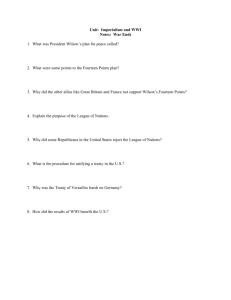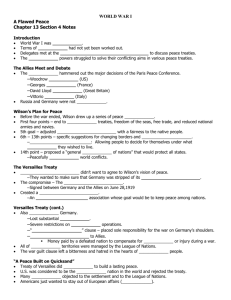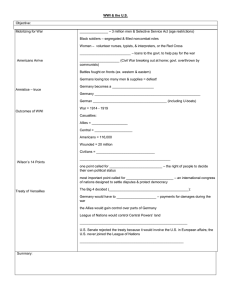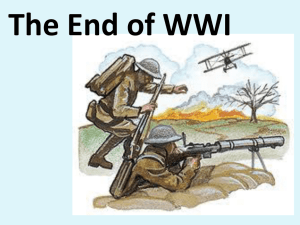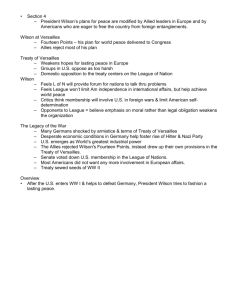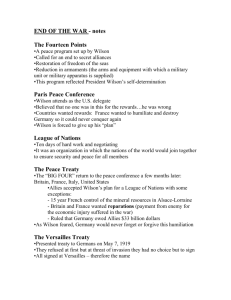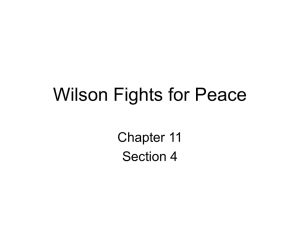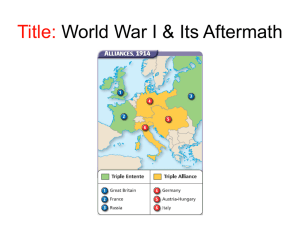Wilsons 14 Points and the Treaty of Versailles
advertisement
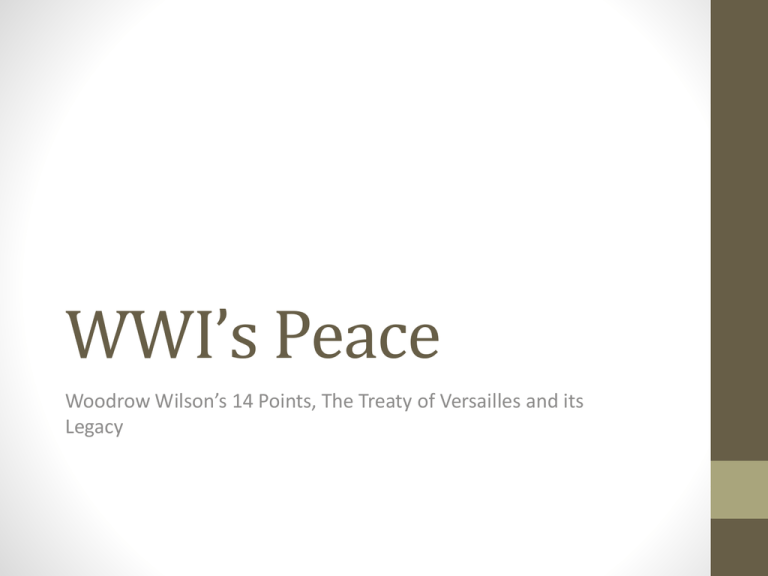
WWI’s Peace Woodrow Wilson’s 14 Points, The Treaty of Versailles and its Legacy Woodrow Wilson’s 14 Points • Wilson’s plan for world peace. • No secret treaties. • Freedom of the seas. • Tariffs should be lowered or abolished/free trade • Arms should be reduced to lesson militarism • Take into account interests of colonies. • Boundary changes based on nationality and selfdetermination. • The League of Nations. The Allies Reject Wilson’s Plan • The Allies rejected Wilson’s plan for peace because they wanted to make Germany pay. • Wilson was fine with only having the League of Nations as part of the peace plan. The Treaty of Versailles • The peace treaty that ended WWI • Only the Big Four were present • The Allies • The Central Powers were not invited!!! • It established nine new nations. • Demilitarization of Germany. • Germany had to pay reparations, or money, to the Allies • 33 Billion dollars. • Germany had to acknowledge blame for WWI • The War Guilt Clause. The Treaty’s Weaknesses • The treatment of Germany. • Made a lasting peace impossible • 3 basic weaknesses, which led to WWII. • Humiliation of Germany • Russia was left out of the treaty and lost a lot of territory. • Germany last its colonies, which made it more difficult to pay back its war reparations U.S. Opposition to the Treaty • The United States people did not want the U.S. to be involved in European affairs. • The United States did not want to be in the League of Nations. • The U.S. did not ratify the treaty.

